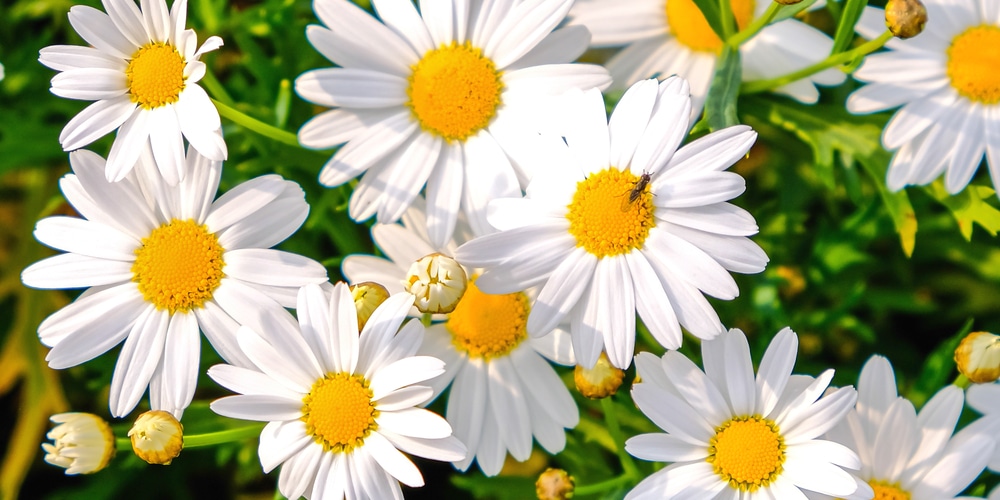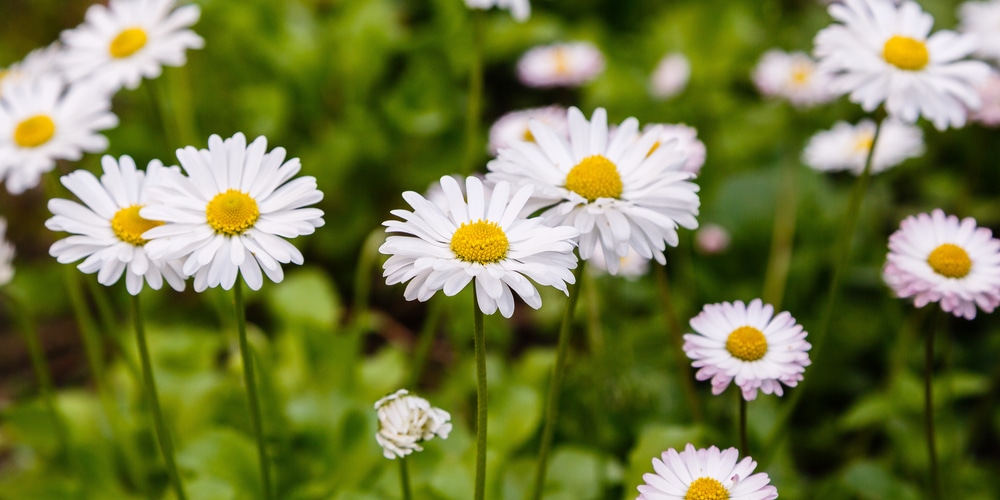Daisies aren’t the first plant that comes to most people’s minds when they hear the word weed. Nevertheless, daisies have some characteristics that stray from the standard garden plant.
So, are daisies weeds? Let’s explore what defines a weed and let you decide for yourself.
Defining a Weed
A weed is a plant that doesn’t have any value where it grows. Weeds also typically have fast growth and the ability to choke out other plants that people would rather have.
When wondering whether daisies are weeds, you must consider whether these flowering plants have the following characteristics:
- Vigorous growth
- Prevents other plant growth
- No value for its location
Scenarios Where People Consider Daisies Weeds
If you ask a farmer, “Are daisies weeds?” they’ll likely answer with a wholehearted “yes.”
That’s because daisies grow well in open areas, enjoying the full sun that pastures and tilled land provide. So, these plants are often a nuisance for farmers trying to grow crops. They’re also inconvenient for pastures, as farm animals don’t like the taste of daisies.
People trying to maintain a clean-cut lawn also consider daisies weeds.
Daisies grow faster and taller than many kinds of grass, outcompeting yards for sun, water, and nutrients. They may look pretty when they flower but make lawns look unkempt when they grow openly in what should be grassy yards.
Understanding How Daisies Reproduce
Daisies have two ways that they reproduce, via seed dispersal in the wind and trailing rhizomes.
The double-whammy impact of the daisy’s reproduction further supports farmers’ and lawn enthusiasts’ claims that daisies are weeds.
Admittedly, people who view daisies as good flowers also struggle with the daisy’s double method for reproducing. Adding fuel to the fire is that daisies reproduce rapidly, making it challenging to control them if you let your guard down.
Situations Where People Consider Daisies Garden Flowers
More than 20,000 types of daisies exist, many of which are due to humans intervening, changing them from their standard white petals and yellow center to a variety of colors and petal patterns.
Because daisies have attractive flowers and long blooms–they flower continuously from spring to fall—they’re popular among gardeners.
Many people intentionally plant daisies, seeing them as valuable flowers instead of a weed. They appreciate this plant’s ability to grow in thick clusters. Furthermore, mixing and matching daisy flower colors is fun for garden enthusiasts.
How To Control Daisy Growth
Knowing how to control their growth is vital even if you want daisies in your garden because you see them as a flower instead of a weed.
So, if you’re growing daisies in a garden, you should frequently cut back your plants and uproot those starting to creep into areas you don’t want.
In contrast, an herbicide is more effective if daisies grow as weeds on your lawn or farmland.
You should also take care when you mow daisy weeds. You’ll spread daisy seeds more if you cut them when they’re in the flowering or seed dispersal stages. So, do your mowing before this occurs.
Similarly, you should deadhead garden daisies before they reach their seed dispersal stage. That way, you reduce the chance of them showing up in other parts of your garden.
It’s All About Perspective
Since a plant’s classification as a weed depends on the point of view, daisies are weeds to some people and garden flowers to others.
The bottom line is that if you don’t want daisies growing in your lawn and they’re interfering with the plant growth you want, they’re a weed. But daisies can also make excellent garden flowers for the right people.

